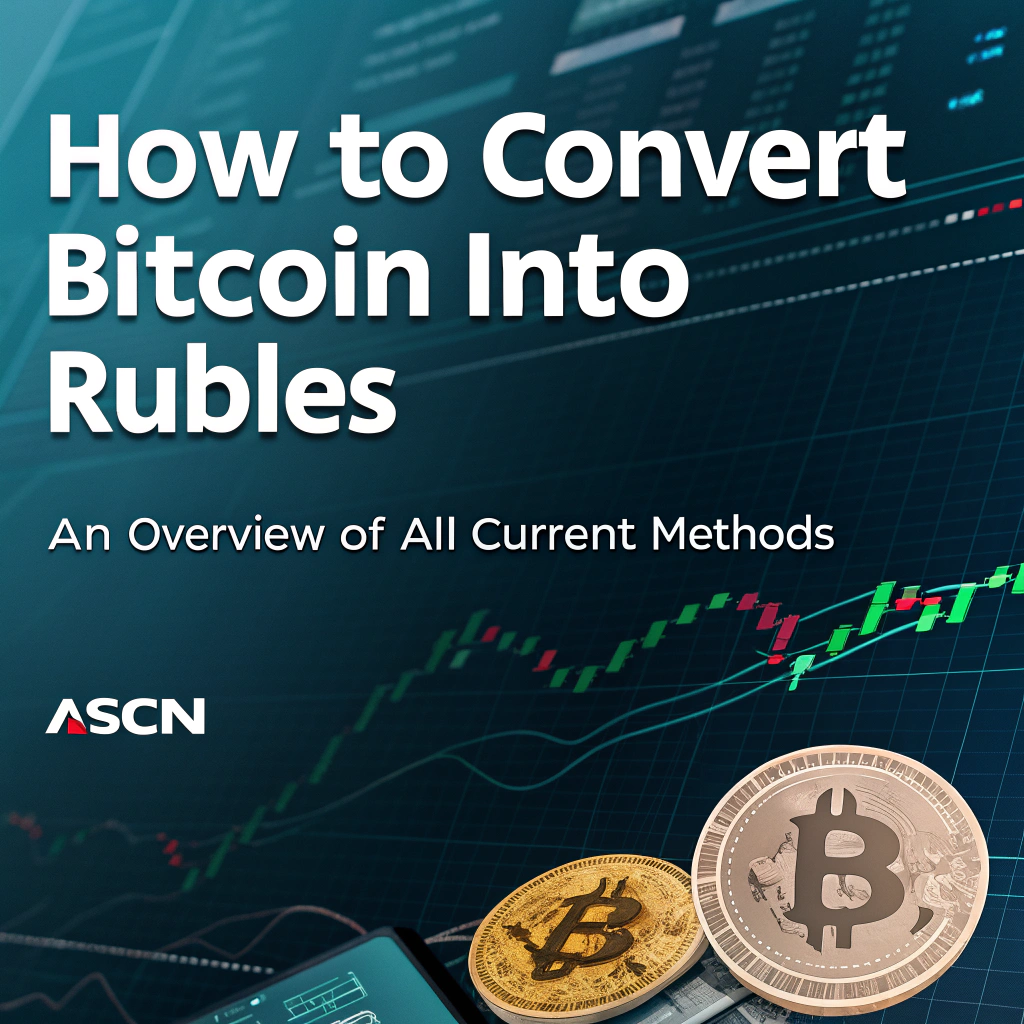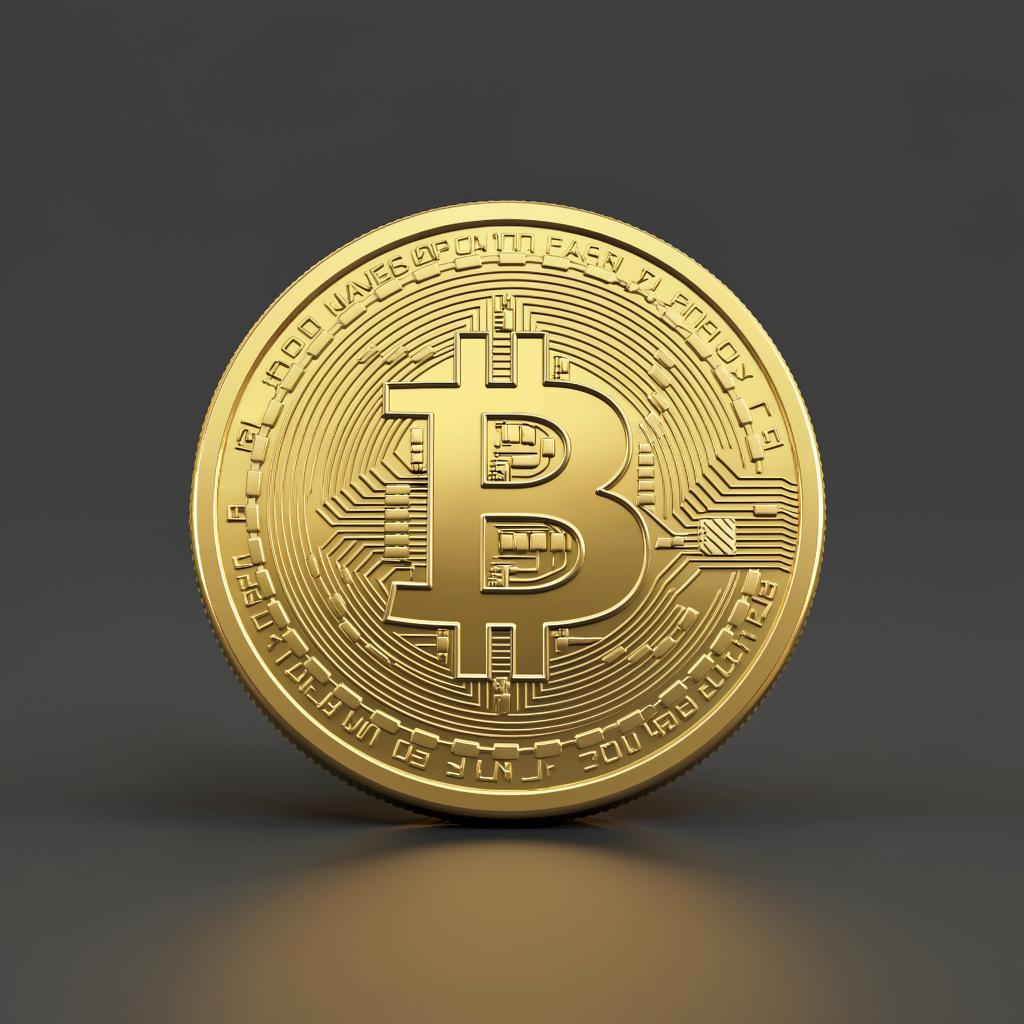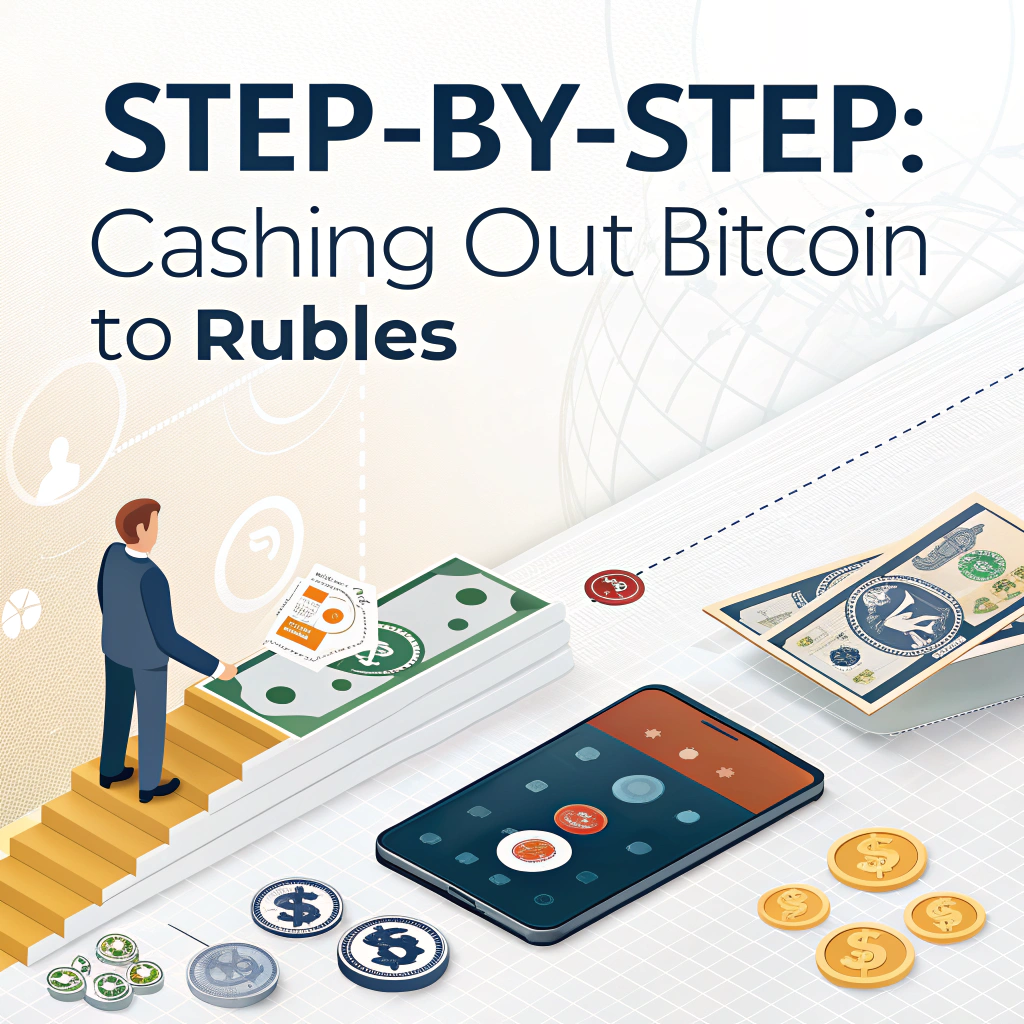How to convert Bitcoin into rubles: an overview of all current methods — ASCN

How to Cash Out Bitcoin to Rubles: All the Real Options — ASCN
At first glance, turning Bitcoin into rubles seems like the simplest thing ever: sell the coin, get the cash. Easy, right?
In practice, not quite. The methods differ in speed, fees, security, and even plain convenience. In some cases, the money hits your card in minutes; in others, you’ll be waiting for days.
What to Know Before Converting BTC to Rubles
Everyone’s heard stories about big crypto gains. But not everyone knows how to actually cash out those earnings.
Without some basic know-how, the process can get messy fast. So let’s unpack the key points before you start moving your Bitcoin into fiat.

Russia’s Legal Framework in 2025
Bitcoin still isn’t recognized as legal tender in Russia — but it’s not banned either.
The law regulating digital assets was signed back in 2021 and has been slowly evolving since.
Here’s what matters:
You’re allowed to own and manage your Bitcoin. Large transactions, though, must be declared. And once you’ve made a profit, taxes are due — no way around it.
Banks have become stricter lately, so stick with verified buyers and transparent platforms.
Exchange Rates, Fees, and Limits
You’ll always pay a fee — that’s the rule of the game. But don’t worry, there are ways to save elsewhere.
The BTC–RUB rate varies from one exchange to another, and often the big platforms offer better rates than random swap sites. Keep that in mind.
Some services will ask you to verify your identity, while banks might cap incoming transfers from individuals. Generally, if you keep withdrawals below 200,000 rubles per transaction, you’ll stay off the radar.
Security: Avoiding Scams and Losing Sleep
Bitcoin may be the currency of the future, but that future is already full of scammers.
Main risks:
-
Phishing sites disguised as real exchanges — you log in, and your coins vanish.
-
Shady exchangers that disappear the moment they receive your BTC.
-
Fraudsters on P2P platforms who never send the promised rubles.
So, double-check domains, use reputable services, and keep your coins only in wallets you trust.
A few seconds of caution can save you thousands.
Main Ways to Cash Out Bitcoin in Rubles
There are tons of ways to turn BTC into rubles — some fast, some cheap, some just easy. Let’s go through the main ones without diving into too much tech jargon.
Centralized Exchanges (Binance, Garantex, and others)
The classic route — and still the most reliable.
Binance, Garantex, and a few others support ruble trading directly and remain go-to choices for users in Russia.
They’re transparent: you know the rate upfront, the fees are predictable, and there’s built-in protection against shady deals. Plus, customer support actually replies.
Think of it as a Bitcoin wallet with a “Withdraw to card” button — simple, structured, safe.
P2P Platforms
This is trading between people, but under the watchful eye of a platform.
The service locks your BTC until you confirm receiving the money — that’s the basic escrow principle.
Why it’s popular? Speed. Sometimes the entire process, from opening the trade to seeing funds on your card, takes under ten minutes.
Still, tread carefully. Outside the platform, risk skyrockets. Never send your BTC first without the system’s protection — that’s how people get burned.
Crypto Exchangers
These are the quick-and-dirty options: visit a site, fill out the form, send your BTC, and get rubles on your card. The service takes a cut in return for convenience.
Commissions here are higher than on exchanges — especially for large sums. But for smaller amounts, the simplicity wins. Many exchangers also skip ID checks, which privacy-minded users appreciate.
The trade-off is obvious: you pay a bit more for speed and anonymity.
Crypto Cards and Banking Services
Now this one sounds futuristic — a card you can top up with Bitcoin, spend in stores, or even use at an ATM.
Services like Advcash, Payeer, Wirex, and Bybit have offered these kinds of multi-currency cards.
In 2025, however, things aren’t that smooth for Russian users. Most foreign crypto cards no longer officially support local clients. Banks often block large or suspicious transfers, and cards can get frozen if your identity isn’t verified.
So yes, it’s convenient — but treat it as an extra option, not your main exit strategy.
Which Method Is Best?
Each method has its perks and traps. Let’s look closer.
(At the time of writing, 1 BTC ≈ 9,500,000 RUB.)
| Method | Exchange Fee | RUB Withdrawal | Limits | Speed | Reliability | |
| Centralized Exchange | 0.1–0.2% | 50–150 RUB | Up to 300,000 RUB/day | 15–60 min | High | |
| P2P Deal | 0%, but rate may vary | None | 1,000–500,000 RUB | 5–30 min |
|
|
| Crypto Exchanger | 1–3% (built into rate) | None | Depends on service | 10–60 min | Medium | |
| Crypto Card | ~1–2.5% on conversion | Depends on provider | Up to 100,000 RUB/day | Instant |
|
A Few Scenarios
Let’s take 0.01 BTC as an example.
Exchange route:
You trade it at roughly 9,500,000 RUB/BTC — so about 95,000 RUB.
After a small trade fee (~95 RUB) and withdrawal (~100 RUB), you get around 94,800 RUB. Not bad, though it requires a verified account and about an hour of your time.
P2P deal:
A buyer might offer a slightly lower rate — say 9,300,000 RUB/BTC. You’d receive 93,000 RUB, no fees, and the deal wraps up in 10–15 minutes. Fast, but there’s always the human factor and a bit of risk.
Crypto exchanger:
Here, the rate might drop to 9,250,000 RUB/BTC. That’s about 92,500 RUB for your 0.01 BTC. No registration, no verification, just a few clicks.
In short: convenient, but at a price.
Crypto card:
Everything’s automatic — your BTC converts when you spend. But the hidden conversion fee (up to 2.5%) brings your payout to around 92,800–93,500 RUB. Handy for small daily expenses, less so for serious withdrawals.
So what’s the takeaway?
Centralized exchanges usually offer the best overall value — fair rate, solid security — but take more time.
P2P and crypto cards are the fastest.
And exchangers? The simplest, though the “ease tax” adds up.
Step-by-Step: Cashing Out Bitcoin to Rubles
Theory’s nice, but let’s move to the real thing. Here are three everyday scenarios that cover most cases.

Example 1: Withdrawal via Binance
Let’s say you’ve got 0.01 BTC sitting in your wallet and want to cash it out with minimal fees.
-
Log in to Binance and go to your Wallet.
-
Convert BTC to USDT — it’s usually faster that way.
-
Head to Withdraw, choose RUB.
-
Enter your card details and confirm via SMS or email.
Depending on your bank and the time of day, the rubles should land within 24 hours.
Example 2: Through a P2P Platform
If you’d rather skip verification or just want the fastest route, this works.
-
Open the P2P section.
-
Choose RUB and your preferred payment method (e.g. Sberbank).
-
Browse listings and pick a seller with good feedback and a realistic rate.
-
Enter the BTC or ruble amount — the platform will calculate the rest.
-
Once the trade starts, your BTC gets locked in escrow.
-
The buyer sends the transfer. After you receive the money, confirm — the BTC is released automatically.
Takes 5–20 minutes, start to finish.
Rule of thumb: never agree to “private transfers” or deals outside the platform.
Example 3: Through an Exchanger (like BestChange)
Not in the mood to register or chat with traders? Then this is your lane.
-
Go to an aggregator like BestChange.
-
Set the direction: “BTC → RUB (card)”.
-
Compare offers — check rate and reviews.
-
Pick a trusted exchanger.
-
Enter the amount (say 0.01 BTC), card number, and contact info.
-
The site gives you a BTC address and the exact payout amount.
-
Send the coins to that address and save the transaction hash.
-
Wait for network confirmation — usually 15–45 minutes.
Once confirmed, rubles arrive on your card. It’s not the cheapest, but it’s dead simple.
If you’re confident, start with P2P — flexible and quick. Want maximum safety? Stick with exchanges. Need instant, no-questions-asked cash? The exchanger is your friend.
Common Mistakes (and How to Dodge Them)
Crypto punishes carelessness, no exceptions. Here are the traps people still fall into.
Choosing a fake exchanger
The classic story: “Everything looked fine, I sent BTC… then nothing.”
Scammers copy trusted sites, changing one tiny detail — a dash, a dot, a letter.
If the rate looks too good, it probably is.
Sending to the wrong address
People mistype wallet addresses, pick the wrong network, or rush and send to the wrong user.
Result? Funds gone forever.
Always double-check — 20 extra seconds beats 20 days of regret.
Falling for phishing
Phishing is practically its own crypto industry now. Fake emails, fake ads, fake Telegram bots — all leading to look-alike sites. Once you log in, your coins are gone.
Type the address manually, enable 2FA, and never trust links from messages.
Final Thoughts: Cashing Out Without Losing Out
Converting Bitcoin to rubles in 2025 is easier than ever — once you understand the landscape. Sure, there are still quirks: some platforms demand ID, some take bigger cuts, others rely on your caution. But after a bit of practice, it all becomes routine.
One golden rule: don’t rush. Bitcoin won’t evaporate in five minutes. Double-check your details, confirm the domain, and verify who you’re dealing with.
And if you’re still unsure which method fits you best — no worries.
That’s exactly where ASCN.AI comes in.
Instead of sifting through dozens of exchanges or comparing rates by hand, let the assistant crunch the numbers for you. It can flag shady offers, highlight the best conversion routes, and save you from costly mistakes — all in a few clicks.

